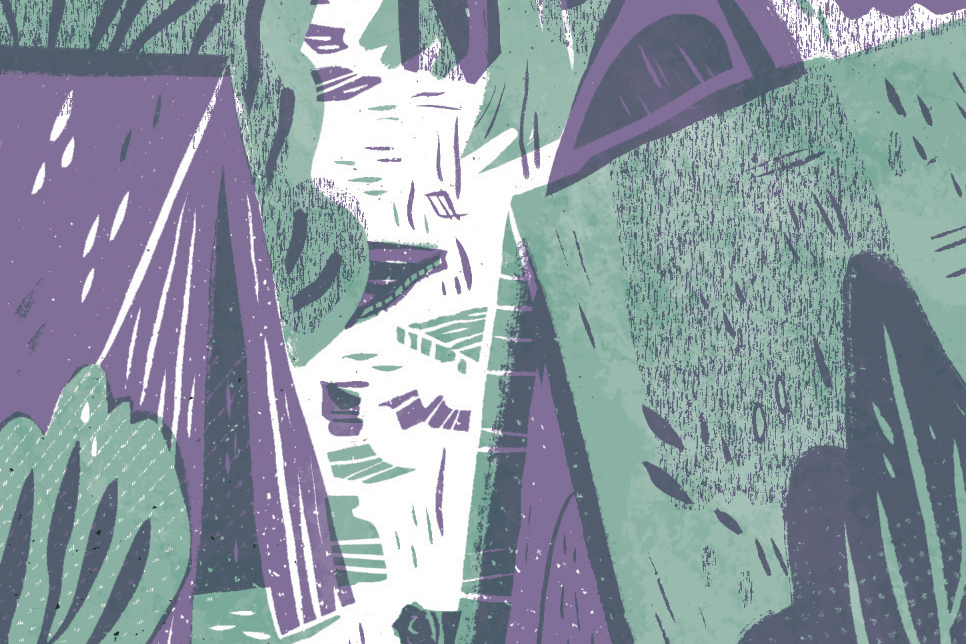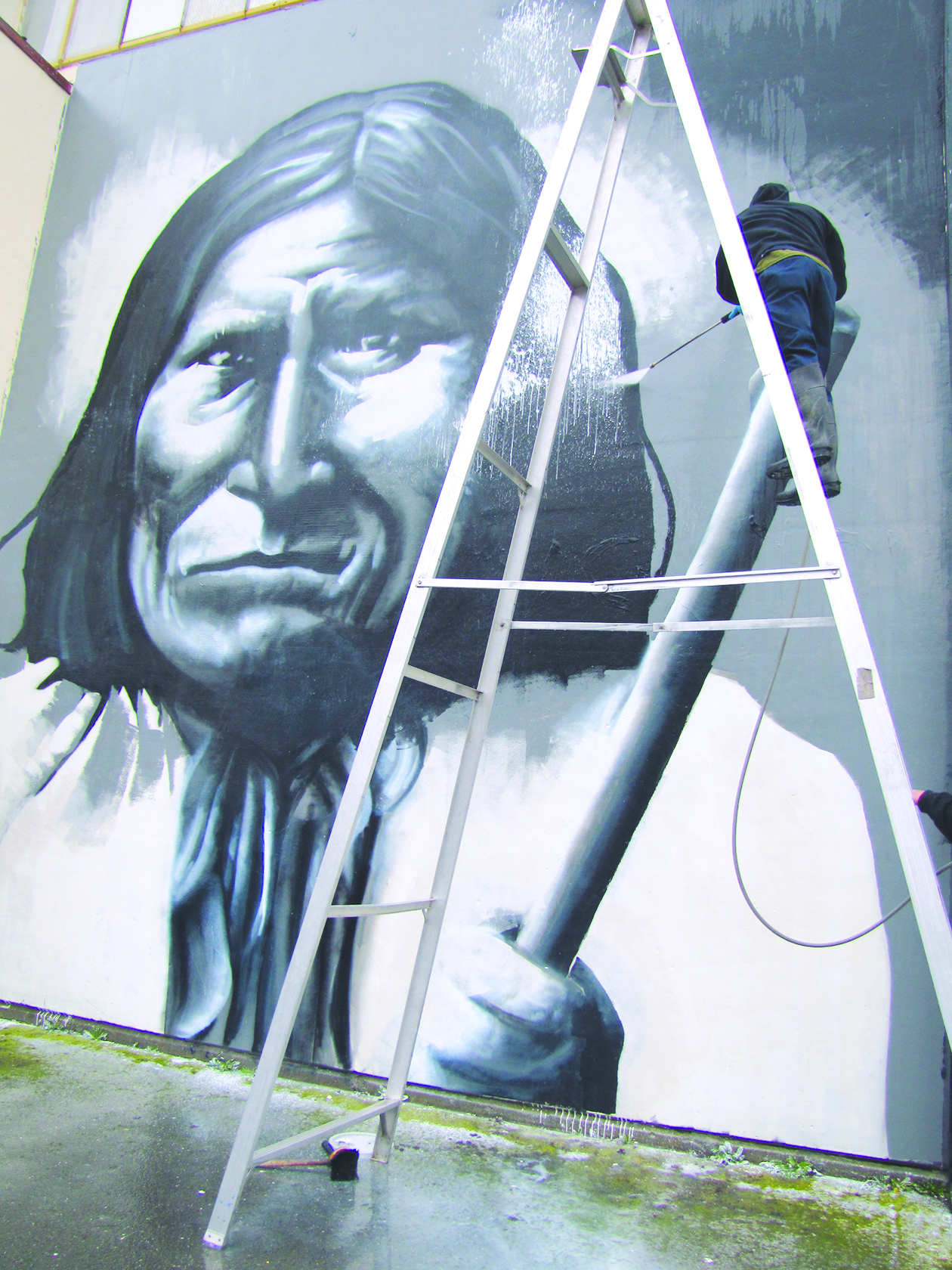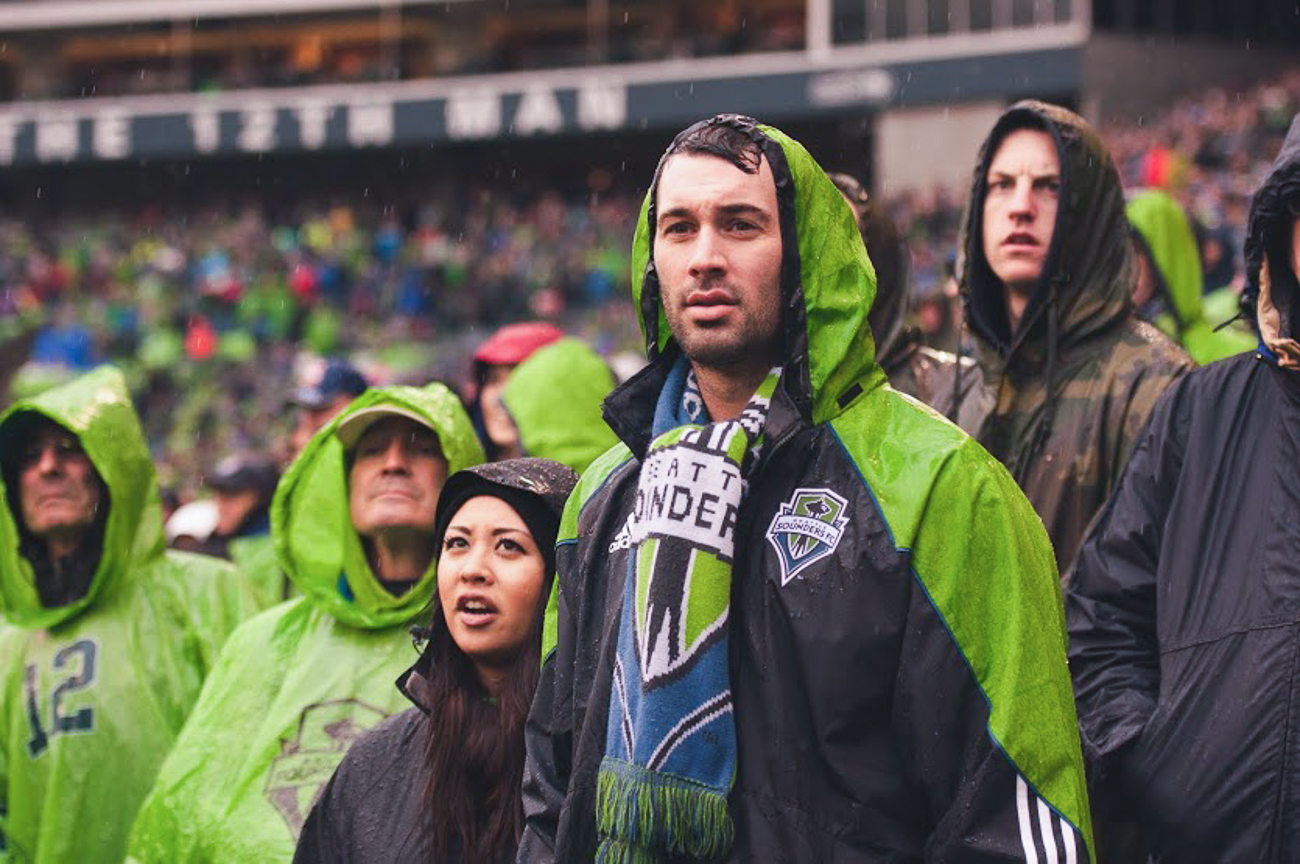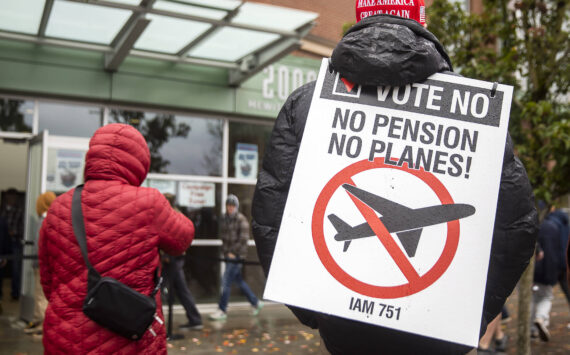The mud just keeps sliding between Seattle and Everett – impacting freight, Amtrak and commuter train service on one of the most scenic and problematic stretches of railway in the region.
“I would classify it as one of the top five most problematic years we’ve faced,” says BNSF Railway Spokesperson Gus Melonas of the continual mudslides between Seattle and Everett, attributing the situation to “extremely rainy conditions for a prolonged period of time.”BNSF owns the tracks, and Melonas says an eight-mile stretch between south Mukilteo to south Everett is the worst in the state – a scenic length of railroad marked by water on one side and high cliffs on the other, where 95 percent of this season’s slides have occurred. Melonas says 40-60 trains run along this corridor every day.
Commuters have surely noticed. To date, according to Sound Transit spokesperson Kimberly Reason, there have been a record 206 Sounder Northline cancellations this rainy season – which was supposed to conclude in March. But two more slides in April – one which shook an Amtrak train last Sunday – are enough to make a person wonder if the slides will ever stop.
Last Sunday’s slide, which derailed an Amtrak passenger train north of Howarth Park in Everett, brings safety concerns to the forefront. Though no one was injured, the event was enough to inspire Alicia Munds of Silverdale to tell the Seattle Times
: “It was like being thrown around like a rag doll.” Munds went on to credit a quick-braking Amtrak engineer with saving the life of passengers aboard the train, including her sleeping 7-year-old daughter.
While derailments like Sunday’s have historically been extremely rare, mudslides between Seattle and Everett haven’t been. Especially this year. Melonas says there have been 200 slides this rainy season, with 56 of them significant enough to at least partially cover the tracks. While most of these slides are what Melonas describes as “nuisances,” the constantly sliding mud has led to two derailments, one last Sunday and another in December.
“Certainly, it’s been an unprecedented year,” says Reason of the continual mudslides and the subsequently canceled Sounder trains.
She’s right. According to figures provided to Seattle Weekly, since the Sounder opened Northline service in 2003, the previous high mark came during the 2010-11 rainy season (October through March), when 70 trains were canceled due to mudslides. The 2012-13 rainy season has seen three times as many cancellations, a record officials with Sound Transit and the state Department of Transportation hope represents an anomaly and not the new norm.
“We’re certainly hoping that this is a fluke,” says Reason of the slides and the record number of Sounder Northline cancellations this season.
Looking at the historical data, Melonas believes the increased number of slides does represent a freak act of nature. He points out that while there have been 56 slides significant enough to block the tracks this season, there were only four last season.
At this point, however, the only thing that seems certain is the mud just keeps coming – particularly over six trouble spots identified by BNSF.
And the fact that the mudslides have increased so dramatically is enough to raise the question: How safe is this stretch of tracks?
“Passenger safety is already our number one priority,” says Reason. “This is an unprecedented season we’re having now. … We’re in communication with BNSF every day, asking every question we could possibly ask.” She says BNSF does everything it can possibly do to assure safe travel in the corridor.
Amtrak Spokesperson Vernae Graham agrees.
“They take the utmost precaution,” Graham says of BNSF.
“It happens. It’s about trying to do your best,” Graham says of mudslides and weather-related issues affecting service.
Ultimately, it’s BNSF that’s responsible for determining whether the tracks the company owns and maintains are safe for passage. Because of this, the company continuously monitors conditions between Seattle and Everett, assessing the probability of mudslides and acting with extreme caution any time a danger is detected. And when a mudslide blocking a passenger rail line does occur, BNSF has a policy that automatically institutes a 48-hour moratorium on passenger rail service – just to play it safe.
“We’re not going to put passengers in harm’s way,” says Melonas.
While Melonas is quick to point out that he “doesn’t want to downplay the danger” posed by mudslides in the corridor, he says a look at BNSF’s record provides all the proof needed of the safety of commuter rail travel in the area.
“Look at the historic numbers. There has not been one fatality as a result of a BNSF derailment since 1981 in this corridor,” says Melonas, referencing an incident in which a BNSF employee was killed after a hazardous material spilled during a derailment.
“You’d have to look back in the records book even farther to find the last passenger fatality,” he says.
But as Sunday’s Amtrak derailment proves, not all mudslides can be predicted, and sometimes the mud does hit a moving train. Melonas classifies the accident as a “freak situation,” saying that a BNSF mudslide alert system would have notified the train of danger and prevented the accident had the mud started to move a “matter of 30 seconds before or after.”
“There aren’t any guarantees,” says Reason of rail travel, comparing the dangers to any other form of transportation, like freeway driving. “We do everything we can to ensure a safe commuter trip.”
“Maintaining the safe and reliable service is a top priority for our agency,” echoes Washington Department of Transportation Rail Communications Manager Stephanie Coon. “We’re doing a lot of things to make sure that corridor is as safe as possible.”
Addressing the problem of safe commuter train travel may come down to money. Because BNSF owns the rail lines, it’s the company’s responsibility to maintain them and mitigate the impacts of mudslides and other weather-related issues, and Melonas says the company spends millions of dollars every year doing just that.
Additionally, in 2010 BNSF and the State Department of Transportation were awarded $16.1 million in federal grant money via the American Recovery and Reinvestment Act – a mere chunk of a much larger federal financial blessing. In total, the Department of Transportation was awarded nearly $800 million, all intended to bolster the state’s high-speed passenger rail system.
According to Coon, addressing mudslides along the stretch of track between Seattle and Everett has become a top priority. But because the state is using $16.1 million in federal grant money to help BNSF shore up tracks the company owns, there was a long agreement process, which Coon says stretched more than a year. Then came the “design phase” of the project, which is currently still in the process of playing out. Originally shovels weren’t supposed to hit the dirt until 2014, but because slides between Seattle and Everett have become so problematic, Coon says the Department of Transportation aims to break ground on at least one construction project to shore up the area by late summer of this year.
“It was really apparent that we needed to do something sooner rather than later,” says Coon of the planned work, which will largely focus on building retaining walls, removing loose soil and installing drainage pipes.
“The corridor is very important to us,” she says.








